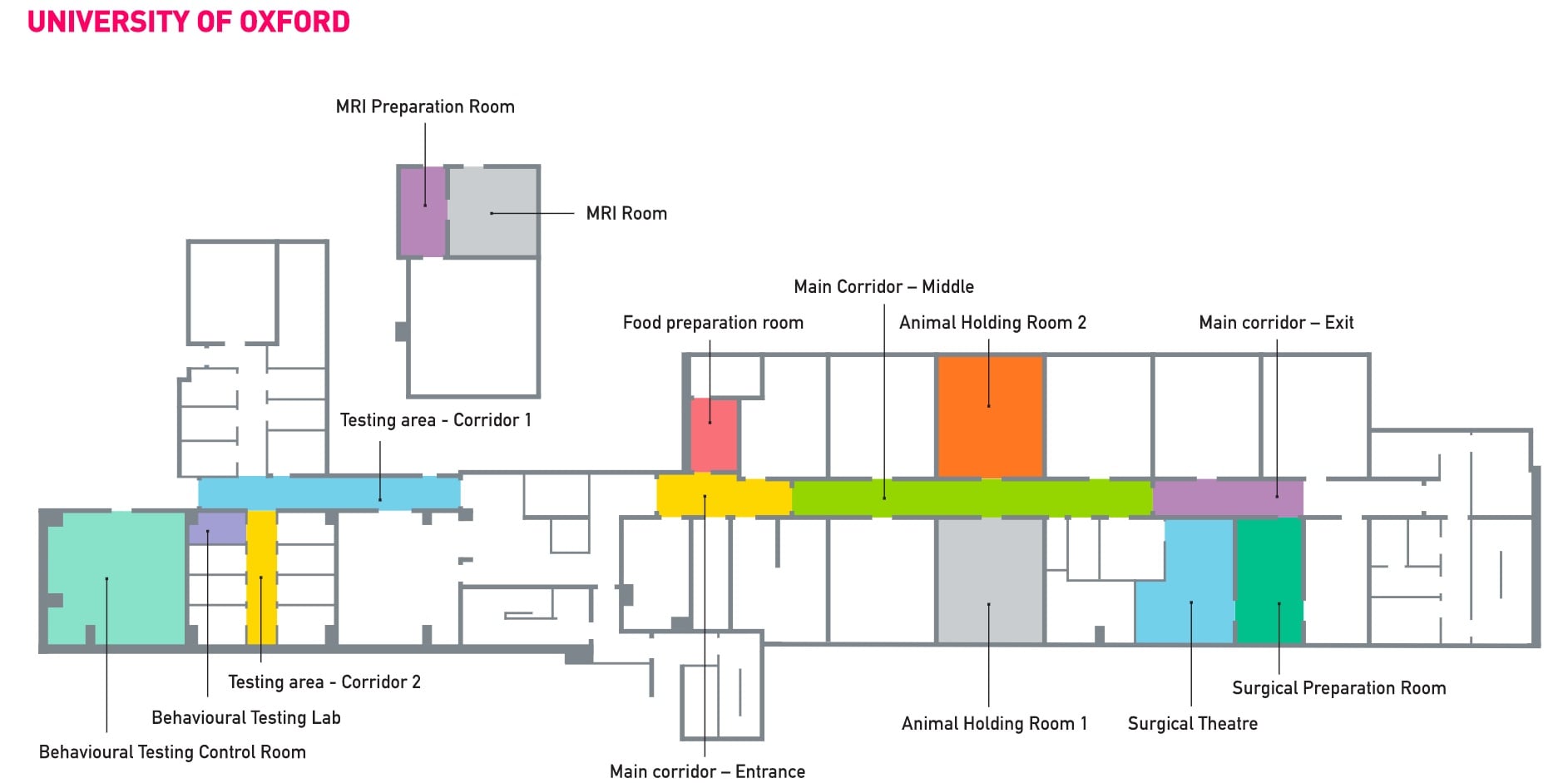The Biomedical Sciences Building
In 2008 the University of Oxford completed a new facility to house animals used in potentially life-saving research.
The building had been in planning since the late 1990s and its purpose was to rehouse research animals in better facilities which reflect the latest thinking in animal housing and care, with a Veterinary Services team on site.
The vast majority of animals housed in the building are rodents (around 98%, based on current research profiles).
The building received full Home Office regulatory approval.
What is the building for?
The Biomedical Sciences Building exists to rehouse research animals that were previously housed in older buildings scattered through the University science area. These older facilities, which are now closed, met all the strict Home Office regulations for animal care, but the University wished to exceed those regulations and set a gold standard for animal care.
Were the old facilities not up to scratch?
They met all the strict UK regulations on the housing and care of animals. However, the University wants to exceed those standards and set a ‘gold standard’ for animal care. That is what the new building allowed.
What species are in the Biomedical Sciences Building?
The building is primarily a rodent facility: 98% of animals housed there are rodents, almost all of which are mice. Other species housed there are fish, frogs, ferrets and primates. The primates account for under half of one per cent (0.5%) of all animals housed in the building.
Is it for drugs testing?
No. The work that takes place in the building is research work, not pharmaceutical testing.
How is the Biomedical Sciences Building better for animal health?
First, it is state of the art in terms of animal health and hygiene. Every individual room has its own air supply, whose pressure, temperature and humidity can be controlled. This complex environmental control system both contains the possibility of any pathogens (disease-causing micro-organisms) spreading and allows for the right temperature and humidity for each species.
Second, it brings the team who look after animal welfare – Veterinary Services – on site, rather than them having to move between different buildings. Their facilities, including training facilities (important for ensuring consistent animal care), are much better than before. The Veterinary Services staff are specialists in animal care and work to ensure the welfare of animals.
How does it improve the quality of life for animals?
On the whole the housing units are larger, and enrichment – providing interest for animals and things which encourage natural behaviour, for example opportunities to climb – is better (see 'Animal welfare' link on left).
How is the building better for science?
First and foremost by being better for animals. Animals in optimal health and in a good psychological state give more reliable, reproducible research results. Second by providing better faculties for researchers and staff. This combination allows even better research and further medical advances.
Virtual tour of the primate research facility
Click on the link below to take a virtual tour around the University's primate research facility.
